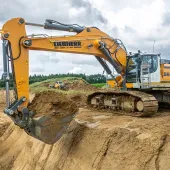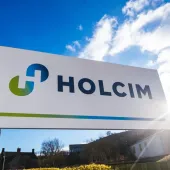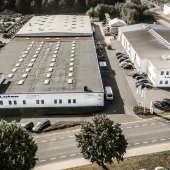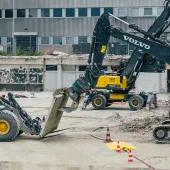The German Trend for High-tech Micro-Surfacing Roads
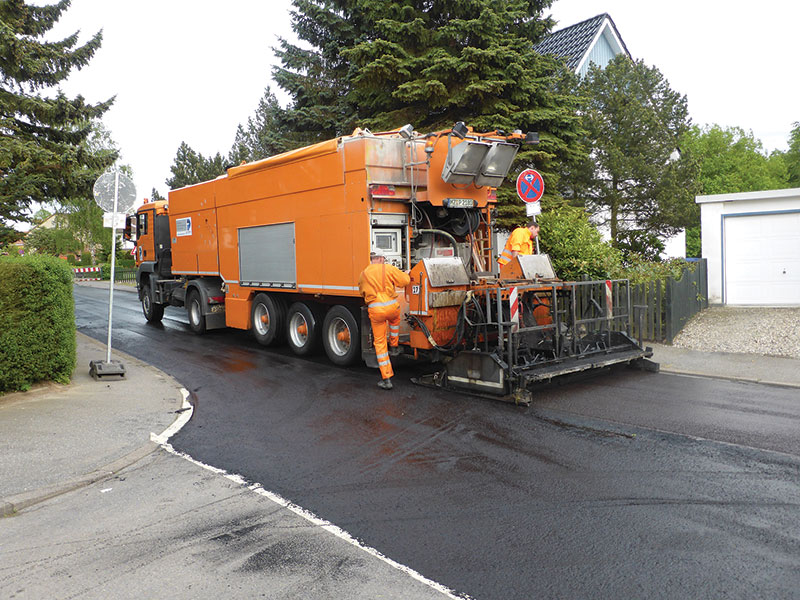
First published in the January 2015 issue of Quarry Management as High-tech Micro-Surfacing
Schäfer-technic describe how cold-applied thin asphalt layers offer a low-cost solution in preventative road maintenance
By Rainer Wiegmann
Forward-looking road maintenance should serve only one purpose: to prevent larger, non-foreseeable consequences, such as increased costs and increased risks, resulting in reduced road safety. To this end, many German cities and municipalities are increasingly using modern and environmentally friendly road maintenance technologies – especially micro-surfacing – that offer lower costs. The micro-surfacing mix of cold polymer bitumen emulsions, aggregate, cement, water and dope is produced directly on the paving machine and immediately applied to the road surface. The cold application process has very low power consumption, which results in significantly reduced CO2 emissions.
The on-site application of micro-surfacing is carried out by specially designed, electronically controlled laying machines. The size of the aggregate used in the mixture as well as the possible need for a second layer depends upon the condition of the existing substrate. A second layer is usually required when re-profiling is advised. The installed thickness of a micro-surfacing averages about 1cm. This eliminates extra work such as milling-off the old surface layer, raising manholes etc. As a result, micro-surfacing not only conserves resources, but also minimizes the cost of disposal.
Moreover, the application of micro-surfacing causes only very minor impairment to traffic flows and local residents, because the newly laid surface can be reopened to traffic within about 30 min. For these reasons, micro-surfacing is often considered to be the most efficient and cost-effective method of road maintenance.
Standard micro-surfacing process
- Visual inspection of the road section to be maintained and repaired to ensure that it is suitable for treatment by micro-surfacing and that no preparatory works are needed.
- Proper cleaning of the road surface by means of a road sweeper and/or high-pressure water cleaner.
- Marking and taping of all street furniture, such as manhole covers and gullies.
- Installation of the first micro-surfacing layer: to re-profile the road surface a maximum aggregate size of 8mm is applied. If there are signs of a lack of bitumen content in the existing road surface, an additional tack coating of bitumen emulsion is strongly recommended, as this will act as a bonding agent. A machine with an integrated spraybar allows spraying and the application of the first layer of micro-surfacing in one pass.
- Installation of the second micro-surfacing layer: about 45 min after applying the re-profiling layer, the second layer can be laid. Its maximum aggregate size is 5mm. Correct application of this homogeneous micro-surfacing mix is essential. A good surface finish can be obtained with the aid of a variable-width distributor box with augers.
Micro-surfacing machine with integrated tack-coating spraybar
This special micro-surfacing method – ie tack-coating and simultaneous application in one pass – requires the latest machine technology, such as the Schäfer SMS 12000 from Schäfer-technic GmbH. On this machine the spraybar is located below the control platform, behind the rear axle of the machine and directly in front of the distributor box. This offers the advantage that, prior to the application of the micro-surfacing mix, a tack coat is put down to ensure that dirt and dust will not affect the adhesion of the composite layers. The dosage of the emulsion is variable – corresponding to that of the micro-mix. Furthermore, when changing the width of the distributor box, the width of the spraybar can be adjusted hydraulically.
The modern Schäfer 910-10 control system on the SMS 12000 includes a PLC and a touch-screen display that allows the input of mix specifications and operating data, as well as the display of both real-time operating and production output data. A sequence control ensures precisely timed starting and stopping of the various components. The input of the mix recipe is carried out in percentages, based on the amount of aggregate required. All these facilities guarantee an exact dosage of the mix from the start, resulting in a constant and homogeneous mix. The advanced onboard control system and feedback monitoring is easy to use and helps to eliminate operator errors.
Micro-surfacing asphalt is suitable for the repair of road surfaces under all load classes of running traffic. In terms of its lifespan, practical experience has shown that micro-surfacing can last between eight and 14 years, providing proof of the high performance and efficiency of this advanced road maintenance technology.
For further information visit: www.schaefer-technic.com


